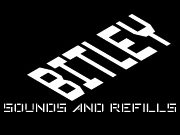Part 1: The formative years

Looking back in time there are so many projects where I have been one of the key sound designers and contributors. And those projects moved on. And so did my work. Let’s break that down, if not for my own sanity and memory.
The first steps
After major work with convincing and saying no to mopeds and other fancy gifts, my dad gave me my first synthesizers when I grew up. I listened to Abba, Howard Jones, Depeche Mode, Alphaville and all of that. I studied piano, clarinet, played all of the instruments we had back home. My dad was a guitar teacher and performer so it came in my DNA. He played me Beatles, Pink Floyd and Moody Blues from an early age. My friend had a Casio VL-Tone. I got bored playing clarinet so I took part in deep family arguments about why stop playing that, for such a highly regarded jazz musician, Harold Jefta, who had played with just about everyone. But jazz wasn’t for me and I was a kid of my time.
So anyway, my first synth was the Casio CZ-101. Didn’t take so long until I was programming sounds in my blue boy’s room. I listened to all of the music that was released and imitated all those sounds. Thing was, I could play a little and the CZ wasn’t much of an instrument in that sense. So the next (major) step up was getting a Roland Alpha Juno 2. And joining rock bands, and learning to play all of the keyboard licks of the time.
Joining the Atari crew
After many attempts of creating tracks with my Alpha Juno, borrowing in my dad’s Sony reel to reel tape machine, his Ibanez analog delay pedal and renting the brand new Roland TR-626 for saturday candy money, I started discovering MIDI by purchasing my first midi cable one of those times when I rented the 626.
So the TR-626 was my first sequencer experience. You might think that a drum machine is just a machine for programming drums. It’s not. A drum machine is a sound source but it is also a sequencer. So by connecting midi out from the 626 to my Juno 2, I would program the drum trigger buttons to output different note numbers. Suddenly my Juno was playing and nobody touched its keys. A revolutionary discovery for a 15 year old kid. The Eureka moment of realising that this “sound” I heard was so familiar from records; the sound of a sequencer controlled synthesizer.
Going to music stores constantly, Atari machines would show up everywhere. So I figured I had to have an Atari. But first, I borrowed a Fostex porta studio from my band member friend Bengt Sjöberg. I actually brought the TR-626 with me on one of our rehersals but as the band had a drummer, the guys were rather unimpressed to say the least. The synthesizer was accepted and much enjoyed by all of them but the drum machine was something evil. I responded in a timely manner by fading out of the band, as I preferred Fade To Gray and not so much I Am Sailing. And so I got a Casio RZ-1.
My first sampling adventures would begin. We had so much fun with it. But then I realized I wanted reverb on my Juno-2. So a dollar short I traded the RZ-1 for a Yamaha R-100 effect processor. Heaven on earth appeared once again. And I saved up for that 1040 STFM. Sold the R-100 thinking I would get a new one later on. Finally in the summer of 1988 I handed out the hard earned cash and got an Atari 1040 STFM with SM124 coupled with Steinberg Pro 12. Sequencing would step up several notches.
The need for multitimbrality
After getting Pro 12, I quickly realized that my Juno 2 wasn’t much fun when it came to the computer world of the midi age. I had been getting a PG-300 programmer and all and I truly loved the Juno, but one sound at a time simply wasn’t the musical landscape I had in mind.
Having had lots of fun with the MT-32 and PR-100 combination at Tälje Musik, the main music store for me growing up in Gnesta, I really wanted an MT-32 but it was a tad too expensive. So I opted for the Yamaha TX-81Z. Now I would really discover FM synthesis as well. Eager to trade in my Juno and also very eager to get my “system” perfect I discovered a tube of silicone and glued the PG-300 programmer to the Juno 2. So practical… and such an embarassement when taking the whole package to a store for trading. Something happened with the Juno when I curiously also opened it up for no reason at all. Suddenly it wouldn’t start up properly.
Fed up with the experience I took it to Second Hand Music on Götgatan in Stockholm. Holy cow so embarrassing for me when the guy pulled the PG-300 from it as the silicone was quite resistant. He gave me peanuts for the Juno and the PG. I think I got hamburgers at Burger King for all of that. But wait, Burger King at the time was called Big Burger in Sweden. Oh well.
A summer without Alicia
The entire year of 1989 passed and I had no keyboard synthesizer, but I had the Atari and the TX-81Z so I would max out this experience by creating tracks anyway, drawing notes into Pro 12 and boy that software would crash three times an hour.
So I got all sequencer programs I could lay my hands on, like Dr T’s MRS, the Midi recording sequencer. Dull to look at but less crashes than Pro 12. Kawai had woken my interest with the not too pricey K1 but I wanted a deep synthesizer engine, somewhat like the Juno but it had to be multitimbral.
I tried everything and I wanted everything as well, but I tuned my focus towards the upcoming K4. Landing the job as Keyboard manager at the toy store Stor & Liten in Gallerian, Stockholm, I quickly found out that we bought all the Casio keyboards from (whole seller) Muskantor in Gothenburg. Muskantor also had Kawai. So I talked to my managers and the decision was made; they would order the K4 as soon it shipped and I would get an employee’s discount on it.
December of 1989 came and the K4 arrived. A ring of several enthusiastic guys appeared around my K4 package and it was fantastic to open it up. We quickly found headphones and everyone had a go testing the synth. I was poor, but I was in heaven. I also borrowed the brand new Cubase software we had in store as nobody ever bought music software there anyway.
So now I had Cubase, two multitimbral synths and a wonky mono mixer. Sometimes I would connect the K4 directly to the cassette deck in stereo as I quickly found out how to pan it in my experiments.
The way to work around the polyphonic limitation was to create patches that only used one “source” on the K4, so that it became 2 osc and 16 voice polyphonic. In other words it had twice the amount of voices compared to the much more expensive Korg M1. And it also had the same amount of voices as the MT-32, as one MT voice would use just one oscillator. So the K4 was truly a nifty machine of its time. Armed with the K4 and my borrowed Cubase software I really could forget about the TX81Z momentarily.
I also worked around the polyphonic limitation by programming drums as in this track, “Harmonicum”, placing them not to play on top of each other so the drum track is pretty much monophonic; BD – hat hat hat – SD – hat hat hat – BD etc.
Suddenly my entire focus was on patches and I ordered Sound Source Unlimited’s two sets “M1 impressions” and “D-50 impressions” from America. I had also started to build several banks of my own on the K4, storing the sysex data with Cubase. Worked extremely well. I upgraded the K4 several times, having a direct dialogue with Muskantor. The version 1.4 of its software finally made it a perfect synth design for the price.
Gear collecting begins
I had built up so many needs and wants after beginning to create music on the computer, and the night I returned the Fostex tape recorder to Bengt, someone had a suicide on the railroad between Gnesta and Mölnbo. It was such a creepy dark friday night. We listened to his records and discussed music. He played me the new Fleetwood Mac album and I was completely hooked on it.
Entering the magical world of Keyboard City Götgatan in Stockholm, we spent a whole day there talking to Simon Danielsson and trying out everything they had. Me and my buddy Mats Kangebo finally reached the high end section of the store and tried out Oberheim Matrix 12 and E-mu Emulator Three. We just dropped our jaws in front of these machines. They were the Stratocasters of synthesizers at that time. Both hooked up to monitors we spent hours jamming on them. When it was time to leave Simon asked me if I wanted a job there. Somehow he had seen that this 17 year old boy had some Thing for synthesizers and boy was I surprised. Suddenly I worked for Keyboard City. This was like giving a cocaine addict the keys to the factory.
In my quest for really capable multitimbral synthesizers, Keyboard City Fleminggatan Stockholm reported that the Proteus /1 was going to be released. Already having tried the Emulator Three I remember reading on the faxed E-mu product paper that Proteus would feature sounds from the Emulator Three library.
Drop
That
Jaw
This was next level on so many levels.
But now, as an employee at KBC guided by Simon, I quickly improved my setup to include the Roland M-120 stereo line mixer, an Alesis Midiverb III, a Boss DR-550 drum machine and finally the crown of the setup; a second hand Roland JX8P. The midi experiences of first layering TX81Z marimbas on top of the Soundtrack pad on JX8P and adding Alesis reverb on that… next level, next level. I had built my first Combinator patch.
Jenezeta, what’s that? It’s word play with Gnesta, where I grew up.
Part 2 will soon be published.
Patrick Fridh aka Bitley 2025
